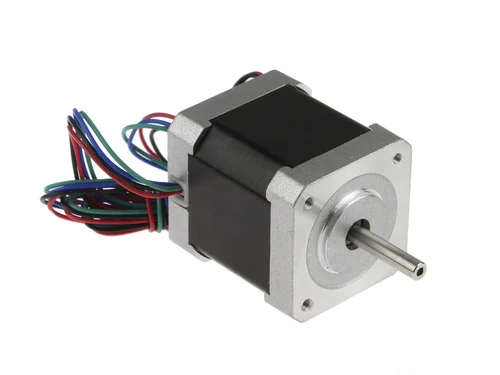Stepper motors are integral components in various applications requiring precise control of motion. They are widely used in industries ranging from robotics to manufacturing and beyond. For buyers considering the acquisition of stepper motors, understanding their functionality, types, specifications, and application scenarios is crucial. This article aims to provide a thorough overview of stepper motors buyers in making informed decisions.
What is a Stepper Motor?
A stepper motor is a type of electric motor that divides a full rotation into a number of equal steps. Unlike traditional DC motors that provide continuous rotation, stepper motors move in discrete steps, allowing for precise control of position, speed, and torque. Each step is typically a fixed angle, making these motors ideal for applications that require exact positioning.
Types of Stepper Motors
- Permanent Magnet Stepper Motors (PM Motors): PM stepper motors use permanent magnets in the rotor. They are known for their good performance in low to medium torque applications. PM motors are generally less expensive and simpler in design, making them a popular choice for many applications.
- Variable Reluctance Stepper Motors (VR Motors): VR stepper motors do not use permanent magnets. Instead, they rely on the reluctance (resistance to magnetic flux) of the rotor to produce motion. These motors are less common than PM motors but offer high-speed performance and are used in applications requiring quick response times.
- Hybrid Stepper Motors: Hybrid stepper motors combine the features of both PM and VR stepper motors. They incorporate a permanent magnet rotor and a variable reluctance stator, offering a balance of high torque and precision. Hybrid stepper motors are versatile and used in a wide range of applications.
Key Specifications to Consider
When selecting a stepper motor, several key specifications need to be considered:
- Step Angle: The step angle is the angle through which the motor moves in one step. Smaller step angles provide higher resolution and precision. Common step angles are 1.8°, 0.9°, and 0.72°, with smaller angles allowing for finer control.
- Torque: Torque is the rotational force the motor can produce. It is crucial to choose a motor with sufficient torque for your application. Torque ratings can be specified as holding torque (the maximum torque the motor can maintain when stationary) and running torque (the maximum torque during operation).
- Current Rating: The current rating of a stepper motor indicates the maximum current the motor windings can handle. It is important to match this rating with the motor driver and power supply to ensure optimal performance and avoid overheating.
- Stepper Motor Driver Compatibility: A stepper motor driver controls the power supplied to the motor and dictates its movement. Ensure that the motor is compatible with the driver you plan to use, considering factors like current limits and control methods.
- Size and Mounting: The physical size and mounting configuration of the motor should fit your application’s constraints. Motors come in various sizes and mounting types, including flange-mounted and face-mounted.
Applications of Stepper Motors
Stepper motors are employed in numerous applications due to their precision and control capabilities. Some common uses include:
- CNC Machines: In CNC (Computer Numerical Control) machines, stepper motors control the movement of cutting tools and workpieces, ensuring accurate and repeatable machining processes.
- Robotics: Stepper motors are crucial in robotics for controlling the movement of limbs, joints, and other components, enabling robots to perform complex tasks with precision.
- Medical Equipment: In medical devices such as imaging systems and diagnostic equipment, stepper motors provide precise control for positioning and movement.
- Automated Manufacturing: Automated assembly lines and manufacturing systems use stepper motors for tasks such as conveyor belt movement, pick-and-place operations, and part sorting.
- Camera Systems: In camera systems, stepper motors control the focus and zoom functions, allowing for precise adjustments to capture high-quality images.
You can also read this network switch
Choosing the Right Stepper Motor
Selecting the right stepper motor involves evaluating the specific requirements of your application. Here are some steps to guide the selection process:
- Define Application Requirements: Determine the key requirements for your application, including the required step resolution, torque, speed, and physical dimensions.
- Match Motor Specifications: Compare the specifications of available stepper motors against your requirements. Ensure compatibility with your existing hardware and control systems.
- Consider Environmental Factors: Consider the operating environment of the motor, such as temperature, humidity, and exposure to dust or chemicals. Choose a motor with appropriate environmental protection if needed.
- Evaluate Cost vs. Performance: Balance the cost of the motor with its performance characteristics. Higher precision and torque may come at a higher price, so assess the trade-offs based on your budget and performance needs.
- Consult with Experts: If in doubt, consult with manufacturers or suppliers who can provide guidance based on their expertise and experience. They can offer valuable insights and recommend suitable options.
Conclusion
Stepper motors are essential components in various high-precision applications, offering reliable and accurate motion control. By understanding the types of stepper motors, their specifications, and their applications, buyers can make informed decisions and select the most appropriate motor for their needs. Whether for robotics, manufacturing, or other specialized applications, careful consideration of motor characteristics and requirements will ensure optimal performance and satisfaction.
